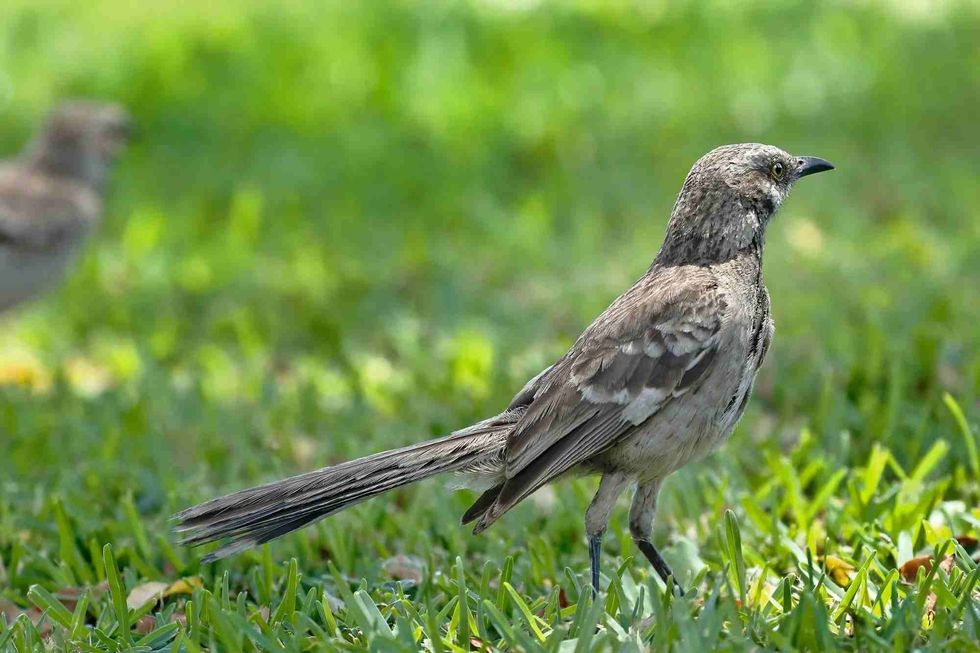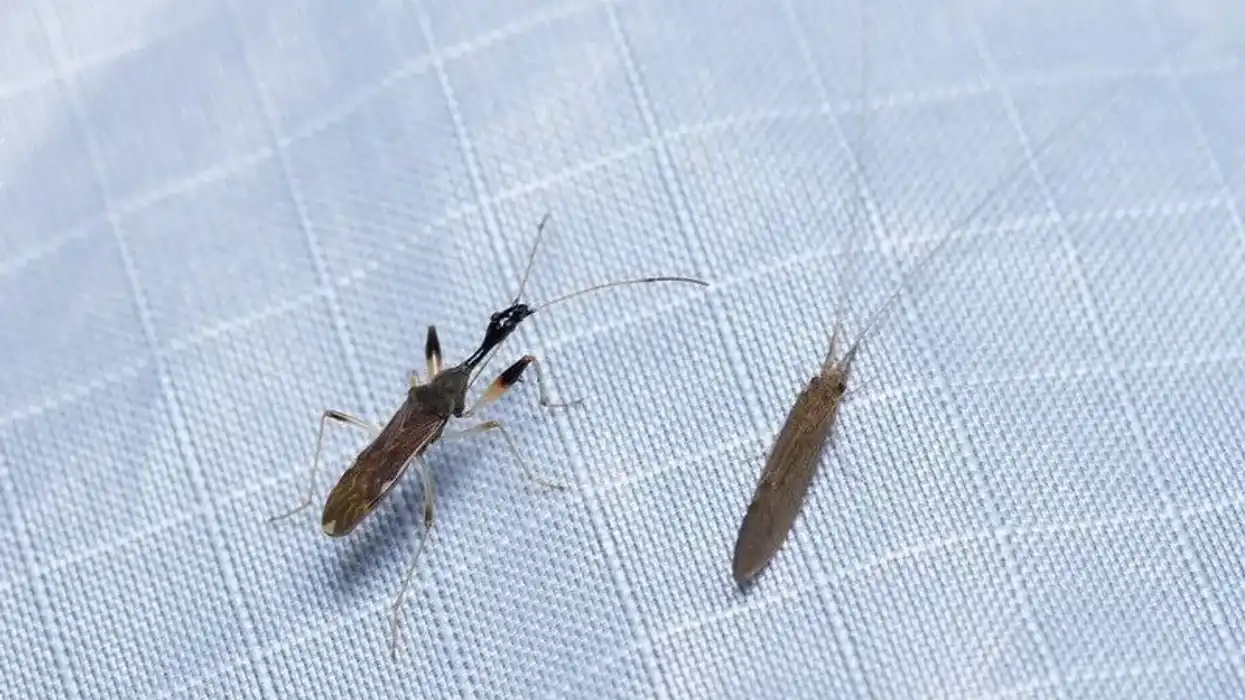The long-tailed mockingbird (Mimus longicaudatus) is a New World species of mockingbirds belonging to the Mimidae family. These birds are widespread throughout their range in Ecuador and Peru in South America and are also found in some parts of Chile.
The physical description of these birds differs from other species of mockingbird. The bird has naturally originated in the dry and arid scrublands and woodlands lying in the western parts of Peru and Ecuador.
The bird is divided into four subspecies based on their differences in range. The loud and renowned long-tailed mockingbird song can be mostly heard during the day.
They produce a continuous and persistent song. Their song can be heard commonly throughout their range. Overall, these birds have a big enough population at present to reach the threshold of an endangered species. Their range is typically restricted to Ecuador and Peru.
To know more facts about these mockingbirds of America, keep on reading these facts. For similar content check out hood mockingbird and mockingbird facts too.
Long-Tailed Mockingbird Interesting Facts
What type of animal is a long-tailed mockingbird?
The long-tailed mockingbird (Mimus longicaudatus) is a type of New World bird endemic to Ecuador and Peru. They are known for their melodious song.
What class of animal does a long-tailed mockingbird belong to?
The long-tailed mockingbird (Mimus longicaudatus) of the Mimidae family and Mimus genus belong to the class Aves, the common class for all birds.
How many long-tailed mockingbirds are there in the world?
The global population of long-tailed mockingbirds has not been determined as of yet. These birds are believed to be fairly common throughout their restricted range in Peru and Ecuador.
However, currently, their distribution has become slightly patchy due to large-scale habitat loss. Due to the uncertainty of the effects of habitat modification trends, the population of this bird can not be determined. For this reason, their population trend is unknown.
Where does a long-tailed mockingbird live?
Long-tailed mockingbirds are endemic to Ecuador and Peru in South America. They are divided into four different subspecies based on the differences in their range. The subspecies Mimus longicaudatus platensis are found in western Ecuador and Mimus longicaudatus albogriseus occur in southwestern Ecuador. The subspecies Mimus longicaudatus longicaudatus and Mimus longicaudatus maranonicus reside in western and southwestern Peru respectively.
What is a long-tailed mockingbird's habitat?
The ideal long-tailed mockingbird habitat includes dry and arid woodland and scrubland of the desert region. These birds are also found along the coastal zone in hedgerows and brush habitats. They are also capable of inhabiting cleared country forests, tree groves, and agricultural lands. They can also adapt to gardens and parks in urban development.
Who do long-tailed mockingbirds live with?
The long-tailed mockingbird (Mimus longicaudatus) is moderately social. They are found in loosely packed groups in the non-breeding season. In the breeding season, the bird lives with its partner in its nest.
How long does a long-tailed mockingbird live?
The lifespan of a long-tailed mockingbird (Mimus longicaudatus) is unknown but this species of the Mimidae family can generally live up to eight years old in the wild.
How do they reproduce?
The breeding pattern of these birds from southwestern Ecuador has been largely studied by researchers. The breeding season of long-tailed mockingbirds lasts from December to July in Ecuador.
These birds are territorial and they generally form monogamous pairs but sometimes, two females are observed to lay eggs in the nest of a single male. In the laying season, the nestlings from a previous brood might be present.
They form a cup-shaped and rough breeding nest using thorny twigs found in the drylands of Ecuador. The nests are lined by finer plant materials and roots.
This bird species builds its nest in the interiors of spiny bushes like cactus in the barren lands of Ecuador. They reuse a single nest for successive broods.
The female birds can lay three to four eggs in a single clutch after breeding. The eggs hatch after an incubation period of 12-13 days and the nestlings fledge the nest after 12-14 days after they are born.
What is their conservation status?
The long-tailed mockingbird (Mimus longicaudatus) of the Mimidae family and Mimus genus is classified as a species of Least Concern in the IUCN Red List. This bird is not threatened globally although habitat modifications in their range have affected their population.
In some parts, their population has become discontinuous but they are still frequently encountered by researchers. No major threats have been recorded throughout their native range in Ecuador.
Long-Tailed Mockingbird Fun Facts
What do long-tailed mockingbirds look like?
The long-tailed mockingbird is a fairly large bird with a grayish plumage like the great gray owl. All the subspecies have a similar physical description. The upper parts and the head is grayish brown in color marked with dark-colored streaks. The tail and flight feathers are dusky browns.
They have dull gray underparts including the belly and abdomen. The Albogriseus subspecies has white tail tips. Male and female birds look alike.
How cute are they?
The pudgy structure of this bird, like a puffin, makes them look cute.
How do they communicate?
These birds communicate by song and vocalization. The long-tailed mockingbird song sounds like a continuous chuckle.
How big is a long-tailed mockingbird?
The long-tailed mockingbird size ranges between 10.6-11.6 in (27-29.5 cm). They are two times bigger than a house finch.
How fast can a long-tailed mockingbird fly?
Mockingbirds are generally fast flyers however, the speed of a long-tailed mockingbird is unknown.
How much does a long-tailed mockingbird weigh?
The weight of the long-tailed mockingbird ranges between 1.9-2.8 oz (54-79 g).
What are the male and female names of the species?
The male and a female mockingbird are known as cock and hen respectively.
What would you call a baby long-tailed mockingbird?
A baby mockingbird is referred to as a chick.
What do they eat?
The long-tailed mockingbird is an omnivorous bird that forages on the ground like a vesper sparrow. Their diet includes fruits, berries, as well as marine invertebrates.
Are they dangerous?
No, they are not dangerous but sometimes they show aggression because of typical bird nature. They can become aggressive when they feel threatened.
Would they make a good pet?
This bird is more compatible in the wild than in captivity.
Did you know...
Like other mockingbirds, this species is not known for imitating the song of other birds.
Mockingbirds are New World passerine birds. A Melanotis caerulescens is a blue-colored mockingbird.
What are the different types of mockingbirds?
At present, 17 species of mockingbirds have been determined worldwide all of which belong to the Mimidae family. Some commonly found mockingbirds are the northern mockingbird, tropical mockingbird, blue mockingbird, and the Galapagos mockingbird.
Why is it called a long-tailed mockingbird?
The long-tailed mockingbird has an exceptionally long tail, longer than other species of mockingbirds. For this reason, these birds are referred to as long-tailed mockingbirds.
Here at Kidadl, we have carefully created lots of interesting family-friendly animal facts for everyone to discover! For more relatable content, check out these chalk browed mockingbird facts and blue mockingbird facts for kids.
You can even occupy yourself at home by coloring in one of our free printable long-tailed mockingbird coloring pages.
Second image by Francesco Veronesi from Italy.









